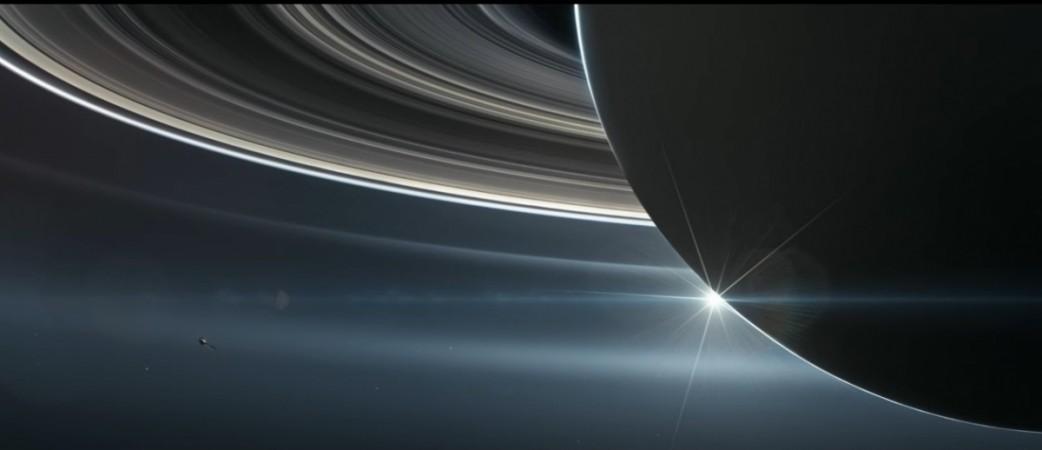
NASA's cassini spacecraft, following its tryst with Saturn on Wednesday (April 26), got back in contact with the Earth. The spacecraft had successfully dived through the narrow gap between the gas giant and its rings and transmitted the raw images that it accumulated.
Also Read: NASA discovers an icy planet having Earth's mass using microlensing
The photos captured by the Cassini spacecraft portrayed various complex structures like giant hurricanes and storm-like features.

"In the grandest tradition of exploration, NASA's Cassini spacecraft has once again blazed a trail, showing us new wonders and demonstrating where our curiosity can take us if we dare," a NASA statement quoted Jim Green, director of the Planetary Science Division at NASA Headquarters in Washington, as saying.

The Cassini encountered Saturn's atmosphere at an altitude of 3,000 km (1,900 miles) as well as the innermost visible edge of the rings which is within 300 km (200 miles). The spacecraft was at Saturn's cloud tops where the air pressure was comparable to the atmospheric level at Earth's sea level, which is equal to 1 bar.

Extra precautions were taken care of by the mission managers in order to make sure that the craft safely dives through these mysterious, unexplored regions of the ringed planet.
"No spacecraft has ever been this close to Saturn before. We could only rely on predictions, based on our experience with Saturn's other rings, of what we thought this gap between the rings and Saturn would be like," said Cassini Project Manager Earl Maize of NASA's Jet Propulsion Laboratory in Pasadena, California.
"I am delighted to report that Cassini shot through the gap just as we planned and has come out the other side in excellent shape," Maize added.
There's a wide gap of 2,000 kilometres (1,500 miles) between Saturn's top atmosphere and the rings.
"The best models for the region suggested that if there were ring particles in the area where Cassini crossed the ring plane, they would be tiny, on the scale of smoke particles. The spacecraft zipped through this region at speeds of about 77,000 mph (124,000 kph) relative to the planet, so small particles hitting a sensitive area could potentially have disabled the spacecraft," according to a NASA statement.
The researchers took protective measures to shield the large spacecraft as it was orienting in the same direction as the approaching ring particles. A dish-shaped high-gain antenna (13 feet or 4 meters across) was used to safeguard Cassini.
"This meant that the spacecraft was out of contact with Earth during the ring-plane crossing, which took place at 2 a.m. PDT (5 a.m. EDT) on April 26. Cassini was programmed to collect science data while close to the planet and turn toward Earth to make contact about 20 hours after the crossing," the NASA statement revealed.
Cassini's next dive through is scheduled to take place on May 2 2017.
Cassini's First Dive Between Saturn and Its Rings:















